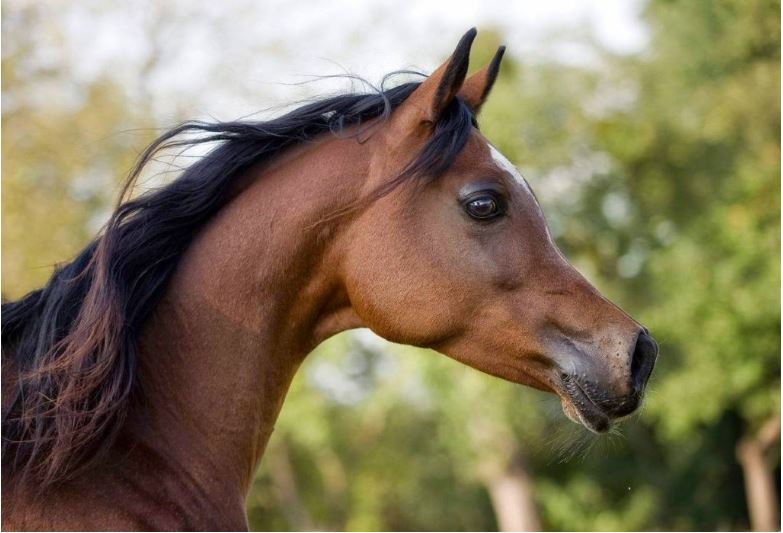
Arabian’s are a very fancy breed of horse. There most noticeable characteristic is their chiseled head, long stretched neck, high tail carriage, and dished nosed. These horses are well balanced, graceful when moving, deep chest, sprung ribcage, and strong legs. There neck should be long and arched, they should have a short back. They have naturally high tail carriage, and should be seen straight. For more than a thousand years Arabians have lived on the deserts of the Arabian Peninsula, they were breed as war mounts for quick forays into enemy camps. Which the weather conditions made Arabians evolve to have incredible endurance. Owning Arabians should great wealth, nomads had to share their food, water, and sometimes even their tents with the beautiful animals. Arabians gained great affinity to men and showed high intelligence.

When we first encountered Arabians the description is kind of different, then what we see today of this breed. As of now history does not tell us where the breed was first domesticated at, nor does it tell us where they were first worked or ridden at. We know that by 1,500 BC the people were confused about their hot-blooded horses known today as Arabians, they were confused do to their lack of knowledge on the horses. Around 3,500 years ago, hot-blooded horses had assumed the role as kingmaker of the east, also the valley of Nile and beyond, which had chanced human history and also the face of the world. At the Chicago world fair, that had been held in 1893 had drew widespread information and attention to Arabians in America.
While every country in the world was invited to participate, Turkey chose to exhibit 45 Arabian horses in a Wild Eastern exhibition. Among the imported Arabians shown were the mare Nejdme and the stallion, Obeyran. Those animals became foundation stock, for breeding and that’s the descendants of Arabians now. The government established the U.S. Remount Service in 1908, there was only 362 registered Arabian horses in the country. It had been a prime time to convince the government to breed Arabians. With few Arabian horses it was no easy task to find enough to adequately represent the breed in the endurance ride. However, the Arabs had made a superior showing, taking most of the prizes including first. Mr. Brown won first place on his purebred Arabian mare RAMLA #347. RAMLA carried 200 pounds on the ride.
Author: Jacob L
Work cited: https://www.arabianhorses.org/discover/arabian-horses/

This blog is very interesting, included great detail about the horse and facts. Great job citing your work. I love horses so this really stuck out to me.
LikeLike
I don’t know horses all that well so this article definitely helped a lot. Even just how Arabian horse resembled peoples wealth was a new one for me. Thank you so much for this 🙂
LikeLike
As part of your editing, my suggestion would be to read your articles out loud. It will help you catch little mistakes like should instead of showed. I really did enjoy your article. I don’t know a lot about horses and after reading your article I feel I know a little about Arabians. I’m glad you included the pictures. It really helped me understand what they look like and what things like tail carriage mean.
LikeLike
I like how you gave descriptive sentences about their appearance, and many details about their characteristics and body parts. The history that you listed was interesting, especially the part where you mentioned that there is no information as to where the Arabians were first domesticated, worked, or ridden at. This article was very interesting and enjoyable to read, good job.
LikeLike